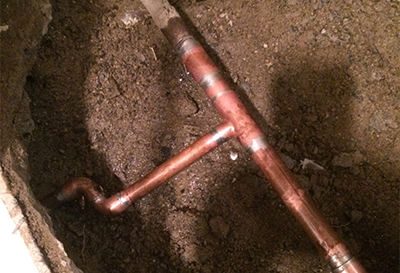Exactly how to Inspect If Your Home Has a Hidden Leakage
Exactly how to Inspect If Your Home Has a Hidden Leakage
Blog Article
This great article following next pertaining to Locating water leaks is quite compelling. Give it a try and draw your own conclusions.

Early discovery of dripping water lines can minimize a potential calamity. Some small water leakages may not be visible.
1. Analyze the Water Meter
Examining it is a guaranteed means that aids you find leakages. If it moves, that suggests a fast-moving leakage. This means you might have a slow-moving leak that might also be underground.
2. Inspect Water Intake
Evaluate your water bills as well as track your water intake. As the one paying it, you ought to see if there are any inconsistencies. If you detect sudden changes, despite your usage coinciding, it means that you have leaks in your plumbing system. Keep in mind, your water costs should drop under the same range each month. An abrupt spike in your bill indicates a fast-moving leak.
A consistent boost every month, also with the same practices, reveals you have a slow-moving leakage that's likewise slowly escalating. Call a plumber to thoroughly check your residential or commercial property, particularly if you really feel a cozy location on your floor with piping underneath.
3. Do a Food Coloring Examination
30% comes from commodes when it comes to water intake. Examination to see if they are running appropriately. Decrease flecks of food color in the tank and also wait 10 mins. There's a leakage in between the container and dish if the shade in some way infiltrates your bowl during that time without flushing.
4. Asses Outside Lines
Don't fail to remember to check your outside water lines also. Must water permeate out of the connection, you have a loosened rubber gasket. One little leak can throw away lots of water and also surge your water costs.
5. Analyze the circumstance and also examine
Home owners ought to make it a practice to inspect under the sink counters and also even inside cupboards for any kind of bad odor or mold growth. These 2 warnings indicate a leakage so punctual attention is needed. Doing regular inspections, also bi-annually, can save you from a major issue.
If you recognize your home is already old, maintain a watchful eye on your heaters, pipes, pipelines and so on. Look for stainings and also weakening as many pipelines as well as devices have a life span. They will certainly additionally normally wear away as a result of wear and tear. Don't wait for it to escalate if you think leaking water lines in your plumbing system. Call a professional plumber right now so you do not end up with a terrible mess in your house.
Early discovery of leaking water lines can alleviate a possible calamity. Some little water leaks may not be noticeable. Examining it is a proven method that helps you discover leakages. One small leak can waste tons of water and also surge your water expense.
If you think leaking water lines in your plumbing system, don't wait for it to rise.
WARNING SIGNS OF WATER LEAKAGE BEHIND THE WALL
PERSISTENT MUSTY ODORS
As water slowly drips from a leaky pipe inside the wall, flooring and sheetrock stay damp and develop an odor similar to wet cardboard. It generates a musty smell that can help you find hidden leaks.
MOLD IN UNUSUAL AREAS
Mold usually grows in wet areas like kitchens, baths and laundry rooms. If you spot the stuff on walls or baseboards in other rooms of the house, it’s a good indicator of undetected water leaks.
STAINS THAT GROW
When mold thrives around a leaky pipe, it sometimes takes hold on the inside surface of the affected wall. A growing stain on otherwise clean sheetrock is often your sign of a hidden plumbing problem.
PEELING OR BUBBLING WALLPAPER / PAINT
This clue is easy to miss in rooms that don’t get much use. When you see wallpaper separating along seams or paint bubbling or flaking off the wall, blame sheetrock that stays wet because of an undetected leak.
BUCKLED CEILINGS AND STAINED FLOORS
If ceilings or floors in bathrooms, kitchens or laundry areas develop structural problems, don’t rule out constant damp inside the walls. Wet sheetrock can affect adjacent framing, flooring and ceilings.
https://www.servicemasterbyzaba.com/blog/how-to-detect-water-leakage-in-walls/

I hope you liked our section about Top leak detection hacks. Thanks a ton for taking time to read through our piece. If you liked our post kindly don't forget to pass it around. Many thanks for going through it.
Report this page